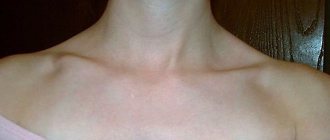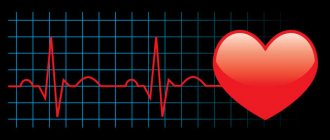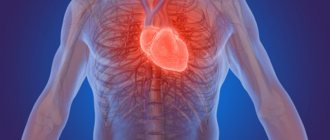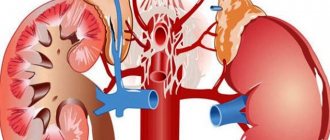Throbbing in the head without pain is a problem that many people face. There are a lot of factors that provoke this disease.
In most cases, such a symptom indicates a disease. This article will discuss the main reasons why pulsation is felt in the head.
Not every person who experiences pulsation in the head will consult a doctor.
The reasons for the reluctance to undergo a medical examination lie in the lack of fear. In most cases, a person feels a pulsation in his head if he is sick.
However, with the disease, such a symptom will appear regularly. The reasons for this phenomenon may be associated with severe pain in the forehead and temples.
With this illness, a person can feel the pulse for several hours.
What is pulsation in the head?
This symptom can appear in completely healthy young people. The sensation of blood flowing through the vessels occurs due to mental overstrain, accumulated fatigue or stress. The pulsation can be weak or strong, accompanied by pain or tinnitus. The pulsation is often localized in the back of the head. In this case, it is associated with vascular dysfunction. The sensation of a pulse may also occur in the frontal, temporal or parietal region.
Causes
The variability in the origin of cephalalgia in the back of the head does not allow an accurate diagnosis to be made at the first manifestation of the symptom. There are several of the most common reasons for the development of pulsation in the occipital region and headache.
- Osteochondrosis.
One of the most common diseases of the spine, in which the neck is slightly bent and compresses the vessels and nerves passing along it. Because of this, oxygen cannot flow normally to the brain and the throbbing headache in the back of the head increases. It makes a lot of noise when bending and lifting.
- Vegetovascular dystonia.
The pathology is typical for women after 30. Usually it drags and hurts only in a certain part: on the left or on the right.
- Migraine.
The introduction of cephalgia into a person’s life is often one of the many symptoms of this disease. Nausea is added, vomiting begins, lethargy and apathy, drowsiness. The disease can be characterized as persistent, long-term, developing against the background of eating disorders, strong odors and noise, stress and addictions.
- Increased intracranial or blood pressure.
Unpleasant sensations arise as a result of deterioration of vascular tone, i.e. the arteries cannot properly respond to any changes within them. Cause irritation of nerve endings. Men are susceptible due to poor lifestyle (smoking, alcohol).
- Strong emotional stress.
Throbbing pain in the back of the head on the left occurs during depression, during stress or experiencing severe sadness.
- Hypothermia.
Getting a cold in the neck is dangerous. This can cause a constant pulsation.
- Sensitivity to weather changes.
Weather dependence affects children or the elderly.
- Sudden and unexpected changes in position for the spine.
- Overexcitement.
Often, when sexual intercourse comes, feelings heat up and then the condition noticeably worsens. Also happens as a result of the end of dancing.
- Noise in the surroundings.
If the patient is in a bad mood or has a hard time concentrating on work, the slightest sound can cause acute pain in the head.
- Neuralgia.
Shooting pain is caused by pinching of the trunk and nearby tissues. The pain worsens with the slightest increase in physical activity and stress. Always shoots from behind.
- Impaired blood flow.
Accompanied by a slowdown in metabolism in the skull.
- Previous stroke, meningitis, encephalitis.
- Oncology.
Tumors compress their entire surrounding space. Sometimes it can shoot sharply in addition to the throbbing pain.
- Injuries.
Serious fractures, bruises or even small bumps can cause long-term discomfort.
Why does this feeling happen?
In a healthy person, when exposed to certain factors, tinnitus and pulsation may suddenly occur. The head may feel light or, conversely, feel unusually heavy. This most often happens with sudden fear, stress or severe physical strain. This condition causes the heart rate to increase and the arteries to narrow at the same time. Therefore, blood, pushing under pressure through the vessels, causes them to pulsate.
Such headaches can occur as a reaction to changing weather conditions, hormonal fluctuations in women, due to a sedentary lifestyle, or due to weakened immunity after serious illnesses. Hypothermia or even excessive consumption of cold foods can also cause throbbing in the head. Often this feeling occurs as a result of severe overwork, accumulated fatigue or emotional overstrain.
Pulse in the head: normal causes, no pain
The feeling of a pulse beating in the head outside of illness usually occurs without a headache, possible causes:
- stress, strong emotions - fear, anger, anxiety, excitement;
- sun, heatstroke;
- mental, visual stress;
- excessive physical activity, especially in insufficiently trained people leading a sedentary lifestyle;
- hot bath, sauna;
- drinking alcohol;
- staying in a stuffy, smoky room;
- excess caffeine due to abuse of coffee, energy drinks, sports drinks.
In the vast majority of cases, rest, access to fresh air, and drinking herbal tea with mint or chamomile are enough to stop the pulsation in the head.
In the back of my head
Outside of diseases, pulsation in the back of the head can occur after sleeping in an uncomfortable position. It also happens during prolonged sedentary work due to tension in the neck muscles. It may appear during a hangover.
Lying down
Pulsation of blood vessels in the head in a lying position is normal when weather or climatic conditions change, overheating or hypothermia. This is especially typical for older people, in whom the lumen of the arteries slowly changes under the influence of external factors due to the rigidity of the vascular walls.
The cause may be premenstrual syndrome in women with fluid retention in the body, as well as stress and physical overexertion. Often such sensations exist during daytime activity, but during the period of rest in a lying position they are more pronounced.
With noise
A pulse with a noise in the head can be a consequence of listening to very loud music, as well as due to the noisy operation of mechanisms (for example, a chainsaw), or barotrauma due to a nearby pyrotechnics explosion. This symptomatology still occurs more often with vascular diseases of the brain.
Ringing or noise without pulsation is called tinnitus, it occurs constantly or periodically in almost 5% of the world's population who do not suffer from any other diseases.
What diseases cause throbbing pain?
In many cases, the frequent occurrence of such a sensation indicates the development of serious health problems. Very often, various vascular diseases do not show any other signs other than the fact that the patient’s head is pulsating. Other diseases may be accompanied by various symptoms, one of which will be pulsation. When such a feeling occurs, it is imperative to be examined by a doctor in order to diagnose serious illnesses in a timely manner.
What diseases cause pulsation and pain:
- aneurysm;
- atherosclerosis;
- hypertension;
- kidney disease;
- cervical osteochondrosis;
- glaucoma;
- brain tumors;
- vegetative-vascular dystonia;
- migraine;
- sinusitis;
- pulpitis;
- trigeminal neuralgia.
Diagnosis of headache
If alarming symptoms occur systematically, it is necessary to undergo examination at a medical organization. In addition to your therapist, you should make an appointment with:
- neurologist;
- ophthalmologist;
- otolaryngologist;
- dentist;
- neurosurgeon;
- psychiatrist or psychotherapist;
- infectious disease specialist.
Not always information about symptoms and a visual examination by a doctor can reveal the real cause of painful pulsations. To make an accurate diagnosis, the following methods are used:
- Hardware diagnostics. The following may be prescribed: magnetic resonance and computed tomography of the head and neck, electrocardiography, electroencephalogram, examination of intracranial and cervical vessels, ultrasound of internal organs, fundus examination.
- Laboratory diagnostics in the form of a general blood test for the presence of inflammatory or infectious processes, spinal puncture.
Vegetative-vascular dystonia: symptoms in adults
Treatment of this disease consists only of relieving unpleasant sensations, since in many countries it is not even considered a disease, referring to the manifestation of other pathologies. This condition is also called neurocirculatory dysfunction. Quite often, when teenage girls complain of shortness of breath, weakness, dizziness, decreased performance and throbbing pain, doctors diagnose “vegetative-vascular dystonia.” Symptoms in adults, treatment and prevention of attacks of this disease usually do not change with age. But the disease occurs mainly in women under 30 years of age. The problems that arise in this case are associated with impaired vascular tone. This is what causes the sensation of pulsation in the back of the head or temples.
Nature of pain
- Left side.
Inflammation can be caused by spinal curvature, myogelosis and other similar diseases. It will throb and feel dull.
- On right.
Such flashes with darkening in the eyes indicate the appearance of a cervical migraine.
- In fits and starts.
With severe inflammation, there may be stiffness at the back.
- Permanent.
You feel nauseous, your chest hurts, your heart seems to tingle. It flows into the frontal and temporal lobes. Problems with blood vessels and blood flow in the brain are accompanied by severe throbbing pain in the back of the head.
- Sharp and only on one side.
Shots and punctures “hit” a person’s health and dull consciousness.
- Morning.
One of the most dangerous characteristics. Basically, a throbbing headache in the back of the head signals tumors.
- In the temples and crown.
- At the slightest movement.
When, when moving the neck, there is a buzzing sensation and the burning syndrome radiates to the right region of the head and jaw, then it is necessary to contact a highly specialized specialist - a neurologist. After severe hypothermia, cephalalgia may not go away for a long time.
Vascular dysfunction causing pulsation
The feeling of a pulse in the head most often occurs if something interferes with the normal passage of blood through the vessels. At the initial stage, this condition may not be accompanied by pain. Some patients go to the doctor complaining that they have a throbbing sensation in their head. After examination, one of the diseases causing this sensation is discovered.
- Vascular atherosclerosis is characterized by the formation of cholesterol plaques on the walls of the arteries. They disrupt the normal flow of blood, creating turbulence, which causes a pulsating noise.
- Hypertension, or high blood pressure, causes blood vessels to narrow. The higher it is, the stronger the pulsation in the head can be felt when getting out of bed or during any physical activity.
- A tumor in the brain can put pressure on a blood vessel, causing it to narrow. This causes pulsation in the head, especially noticeable in the morning.
Why does this phenomenon occur?
- Aneurysm. With an aneurysm, a person feels severe pain in the head. The pulsation is felt mainly in the temporal zone. An aneurysm provokes these symptoms in most cases. It is worth noting that this is a rather dangerous disease. Why? When an aneurysm ruptures, there is extensive bleeding into the brain. If the patient is not provided with timely medical care, there is a high risk of death. Aneurysms are more common in women than in men. Patients with vascular aneurysm do not show any symptoms for a long time. As the disease progresses, pulsation occurs. In some cases, it occurs without pain.
- Atherosclerosis of cerebral arteries. The causes of this symptomatology may be associated with the presence of atherosclerotic plaques in the arteries of the brain. At an early stage of the development of the disease, a pulsation without pain occurs in the person’s head. Why does it occur? The factor that causes the pulse felt in the temples is plaque in the cerebral arteries that prevents free blood flow. As a result, the brain does not receive enough blood to function properly. This causes movement in the narrowed cerebral arteries to become difficult. At this point (where the arteries narrow) the blood flow becomes turbulent. As a result, a person not only feels a pulse, but also experiences tinnitus.
- Cervical osteochondrosis. With this disease, the head pulsates in the area of the crown and back of the head. The causes of a palpable pulse are the growth of cartilage and bone tissue of the spine. These tissues compress the artery, resulting in disruption of normal blood circulation in the body. The brain does not receive enough oxygen from the blood. Pulsation in the head with cervical osteochondrosis is pathological, although the person does not feel pain.
- Oncology. With cancer, a pulsation occurs in a person’s head, but he does not feel pain. This symptom appears mainly in the morning. The intensity of discomfort increases over time. The reasons why a pulse occurs in the frontal part of the head lies in the compression of blood vessels by a growing tumor. After some time, this symptom appears along with acute pain. At a late stage of the development of the disease, the patient who has been diagnosed with oncology also exhibits other symptoms, namely hearing impairment, vision, convulsions, hallucinations, vomiting, etc.
- Increased blood pressure (hypertension). The reasons why a person feels pulsation in the head with hypertension lies in the disruption of normal blood flow to the vessels of the brain. Moreover, the higher the patient’s blood pressure, the stronger he feels the pulse. At the beginning of the disease, pain does not occur, but over time, the person begins to experience discomfort.
- Psycho-emotional tension, stress. When a person is under stress, his blood flow through the vessels accelerates. The more negative emotions he experiences, the higher the risk of arterial spasm. The pulsation occurs because the body of a person in a state of severe stress produces abundant adrenaline. In this case, the person does not feel pain in the head.
- Neurocirculatory asthenia. This disease is known to everyone as vegetative-vascular dystonia. With neurocircular asthenia, a symptom such as frequent pulsation in the head also appears.
With vegetative-vascular dystonia, the patient does not experience pain. The main factor provoking this disease is heredity.
Pathologies of the cardiovascular system also provoke vegetative-vascular dystonia.
Other symptoms of this disease: shortness of breath, increased fatigue, a sharp increase or decrease in blood pressure, discomfort in the heart during exercise, dizziness.
Diseases of other organs
- Some kidney diseases associated with impaired urine flow lead to an increase in the volume of circulating blood. This also negatively affects the cerebral arteries, causing noise with every heartbeat.
- Cervical osteochondrosis often causes pulsation in the back of the head. After all, it leads to narrowing of the vertebral artery. The blood flow, entering the brain vessels under pressure, causes such noise.
- Glaucoma is accompanied by a strong increase in intraocular pressure. This leads to the appearance of pulsation in the temporal and frontal parts of the head.
- Sinusitis, frontal sinusitis and even ordinary sinusitis often cause a feeling of distension and pulsation of blood in the forehead.
Treatment and prevention
Preventive measures, used regularly, have an amazing healing effect. Over time, your persistence will help you completely stop taking medications and live a full, healthy life.
- avoid drafts, do not expose yourself to hypothermia (it only takes one time to get very sick to provoke a series of attacks);
- lifestyle change: review the menu, give up bad habits;
- Yoga, running, walking help a lot;
- you need to sleep at least 8 hours;
- learn to rest, just lie down and relax, avoid stressful situations;
- It is ideal to have a hard bed and a hard orthopedic pillow, this is 90% of a sound sleep.
Don't drown out the problem with pills for throbbing headaches! Contact a specialist immediately and help yourself.
If during the diagnostic process serious diseases were discovered, in which throbbing pain in the head is only a symptom, then comprehensive treatment is required, aimed at eliminating the root cause of the pain. Various types of massage or acupuncture can be used for this. If pain is associated with psycho-emotional disorders, then hypnosis can be used as a therapeutic measure.
If a tumor is discovered during diagnosis, surgical treatment is indicated. Using modern medical technologies and equipment, in most cases, the prognosis is positive. If there are small tumors, a cyber knife and laser are used. In difficult cases, surgery is combined with radiation or chemotherapy.
To prevent throbbing headaches, you should normalize your daily routine. It is necessary to avoid overwork, nervous tension, and stressful situations. Walking in the park before bedtime is useful for prevention. You need to sleep in a well-ventilated area on a comfortable sleeping place.
Diagnosis of the causes of pulsation
It is very important to see a doctor if these symptoms appear. After all, pulsation in the head can be a sign of serious diseases, for example, aneurysm, atherosclerosis or hypertension. Therefore, timely diagnosis will help avoid complications. When contacting a doctor, it is important to talk in more detail about your sensations: when and how often the pulsation occurs, where it is localized, what factors provoke it, whether there is pain. Typically, after collecting this information, the doctor prescribes the following diagnostic procedures:
- blood and urine tests;
- MRI or ultrasound of the brain;
- electroencephalogram;
- angiography;
- X-ray of the cervical spine.
A consultation with a neurologist, ophthalmologist, cardiologist, otolaryngologist, and neurosurgeon will also be necessary.
How to get rid of cutting pain in the head?
A number of comprehensive measures will help eliminate acute and severe headaches:
- taking painkillers prescribed by a doctor;
- in case of stress, it is recommended to take a herbal medicine, for example, valerian or motherwort;
- Regular filtered water will help ease the pain; adding lemon increases the effect by an order of magnitude;
- various relaxation techniques help relieve pain;
- massage of certain points of the head or body, for example, the second metacarpal bone, located between the thumb and index finger;
- compliance with preventive measures.
If the attacks are constant, self-treatment at home will not provide the proper effect and relief. It is necessary to undergo a detailed medical examination.
Brain examination
For an initial appointment, you should contact a therapist or neurologist. The doctor will conduct a survey, give a referral to other specialists, as well as to undergo a brain examination:
- laboratory tests (blood, urine);
- MRI or CT (tomography of brain structures);
- EEG (electroencephalography) to check brain activity;
- Ultrasound for examination of blood vessels;
- REG to identify pathologies of the cervical spine and skull bones;
- fundus examination.
After identifying the cause of headache, the doctor prescribes a course of competent treatment with a long-lasting therapeutic effect.
First aid
First aid measures at home are as follows:
- taking medications or folk remedies;
- drinking plenty of water or herbal decoction;
- taking a contrast shower or a warm, relaxing bath;
- provide yourself with isolation from light or noise, lie down on a flat surface and rest;
- Hot lotions on painful areas or, on the contrary, cold compresses (for example, an ice pack) help relieve the condition;
- use of massage and relaxation techniques.
Treatment with folk remedies
Many people prefer to use folk natural remedies rather than chemical ones. Apple recipe If you have a sudden morning attack, it is recommended to eat a slice of apple sprinkled with salt. At the same time, drink plenty of warm water. The painful condition will gradually subside. Mint recipe Brew peppermint or dried lemon balm (1 tbsp) with a glass of boiling water, close the lid and let it brew for a while. Next, you need to strain the broth, adding a spoonful of honey. This is an excellent proven remedy for severe pain in the head.
Fast acting tablets
To get rid of severe acute pain in the head of a domestic nature, provoked by external factors, there are a lot of remedies that can be bought without a prescription.
| Name | Reception scheme |
| Paracetamol (Panadol, Efferalgan) | Take 1-2 tablets. 3 times a day |
| Analgin | Recommended dosage: tablets or intravenously, 1 pc. 3-4 times a day |
| Nalgesin (naproxen) | 1 capsule until pain is relieved |
Features of the treatment of this condition
If after the examination no serious abnormalities in the condition of the blood vessels are revealed, to get rid of the pulsation in the head you need to change your lifestyle. Regular light physical activity, proper nutrition, taking vitamins and lack of stress will easily help you cope with unpleasant sensations. And to relax and relieve emotional stress, you can use breathing exercises, do auto-training or yoga.
If a vascular dysfunction is detected, first of all, it is necessary to treat the underlying disease. In addition, physical therapy, massage, physiotherapeutic procedures, hirudotherapy and sanatorium-resort treatment will help normalize the condition. It is not recommended to take any medications on your own, as this can cause further harm to yourself. Only in case of severe pain can you take an Aspirin, Paracetomol or Ibuprofen tablet.
When to see a doctor
A severe throbbing headache in itself is already a cause for concern about your health and requires consultation with a specialist. But there are situations in which delay is unacceptable and only a doctor can alleviate a person’s suffering.
You should contact a medical facility or ambulance if:
- Cephalgia does not go away within several hours, even after taking painkillers.
- The pain begins to pulsate more intensely, although the person does not increase the load on the body, does not move, does not bend over.
- The back of the head begins to hurt very much immediately after waking up, or the person wakes up due to severe pain and cannot do anything.
- Unpleasant sensations are accompanied by severe dizziness, partial paralysis or clouding of consciousness, the person cannot speak, he feels sick and vomits.
- Pulsating shocks of varying intensity, which cannot be eliminated, bother you for a long time - for several days.
- The buzzing is constantly localized in a certain area of the head.
- The pain is accompanied by low or high blood pressure.
- The nature of the pulsations changes with continuous periodicity.
Traditional methods of treatment
As a supplement to the main treatment, various folk recipes can be used. But this can only be done after consulting a doctor. What best helps to cope with pulsation in the head:
- tea made from fresh crushed ginger root with honey and lemon normalizes blood circulation well;
- if there are no stomach problems, you can eat a tablespoon of chopped horseradish root mixed with sour cream three times a day;
- strawberry flower tea relieves cerebral vascular spasms;
- drink a glass of mulberry shoot decoction 3 times a day;
- make a tincture of garlic in vodka and take it, adding a few drops to milk;
- Dandelion flower syrup normalizes the condition of blood vessels;
- You can also drink decoctions of valerian root, hawthorn berries, chamomile flowers, motherwort, and mint.
Treatment
With a slight manifestation of pulsation, a person should optimize his daily routine. It must be remembered that physical fatigue leads to poor health.
Therefore, if a person works a lot physically, he must devote time to rest. If possible, you need to increase your sleep hours.
- Stress should be minimized. If a person is forced to come into daily contact with the object of his stress, he should try to switch his attention to another object.
- The number of bad habits should be minimized. If a pulse regularly appears in the head area, this means that you should stop smoking.
- Primary treatment should take place in a medical facility. The doctor will prescribe appropriate therapy for the patient.
- If the patient is diagnosed with cancer, then therapy will include mandatory removal of the tumor. If necessary, treatment of nerve and vascular lesions will be carried out.
- The patient is also recommended to undergo manual therapy.
- Physical education classes will be useful in this case.
- To combat stress, it is recommended to drink herbal teas. They have a mild sedative effect. For example, you can make dandelion tea.











